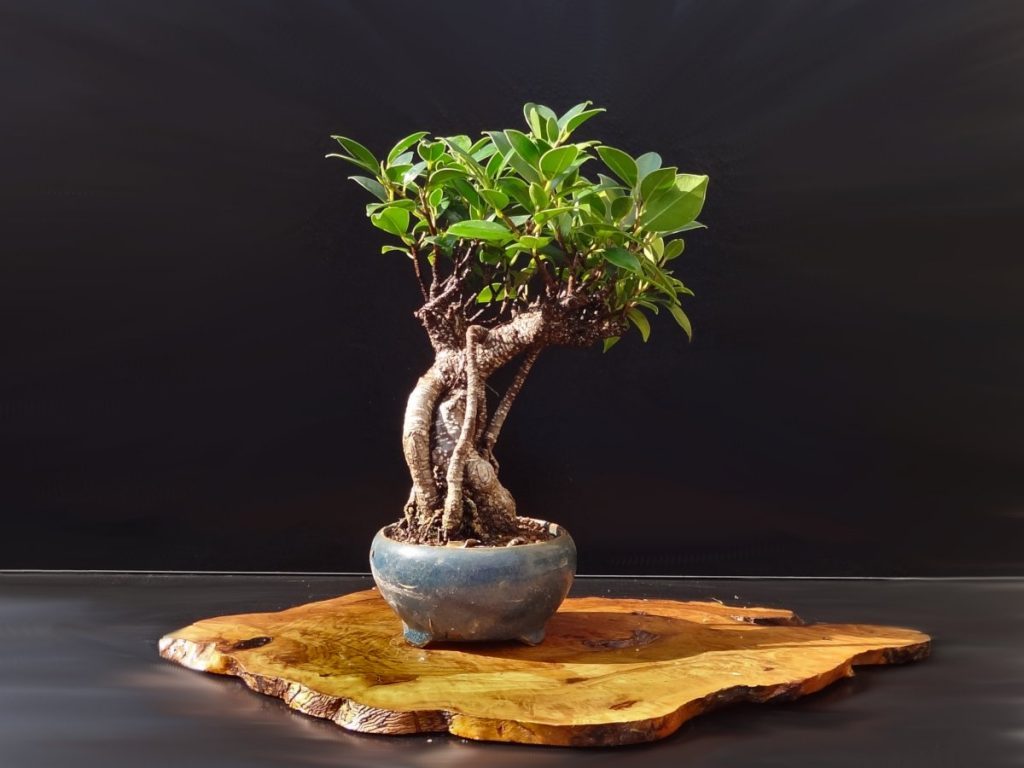- No products in the cart.

The Golden Gate Ficus Bonsai, also known as the “tiger bark” Ficus, is a stunning and unique addition to any plant collection. It originates from China and has been used in bonsai for centuries. With its delicate leaves and gnarled trunk, it resembles a miniature version of the grand trees found in the wild. This bonsai is carefully trained and pruned to maintain its shape, and its beautiful leaves add a touch of sophistication to any room. The Golden Gate Ficus Bonsai is also easy to care for, making it a perfect choice for both beginners and experienced bonsai enthusiasts. Here are some tips and techniques for caring for your Golden Gate Ficus Bonsai tree:
TEMPERATURE
The optimal temperature range for the Golden Gate Ficus Bonsai is between 65-75°F (18-25°C). Exposure to temperatures outside of this range can cause damage, with cold temperatures being particularly harmful. Although this plant is typically kept indoors, it may benefit from some time outside during the summer.
WATERING
Proper watering is crucial for maintaining a healthy bonsai. Typically, indoor bonsai should be watered every two to three days. However, the exact watering schedule may vary based on the type of tree, so it’s important to refer to the information tag that comes with your bonsai for specific instructions.
When your indoor bonsai is outside, it will require more frequent watering, so be sure to water it daily. Use a watering can or hose attachment with a fine-spray nozzle to thoroughly soak the soil, allowing the water to run out of the drain holes. While misting the foliage can be beneficial, it should not be considered a substitute for proper watering.
FERTILIZING
Fertilizing the plant regularly with a balanced fertilizer can also promote growth, with an emphasis on nitrogen in the summer and less in the winter. Despite its need for proper care, the Golden Gate Ficus Bonsai is a resilient plant that can survive even under neglectful conditions.
For optimal results, most water-soluble and time-released fertilizers work well when used as directed. For more mature bonsai specimens, it is recommended to use slow-releasing organic fertilizers for a more sustainable and natural approach to plant nutrition.
REPOTTING
To ensure the health and growth of your bonsai, it’s important to repot it every four to five years when its root system becomes constricted in the pot. Repotting indoor bonsai should only be done during the late spring or early summer.
It is important to use a quality bonsai soil, as regular potting soil may compact and block proper drainage. If you are new to bonsai care, it’s recommended to wait at least one growing season after receiving your tree before repotting it to give it time to become well-established.
By following these tips and techniques, you can keep your Golden Ficus Bonsai Tree healthy and thriving for many years to come. Remember to monitor your tree regularly and make adjustments as necessary to ensure that it receives the proper care it needs to thrive.
